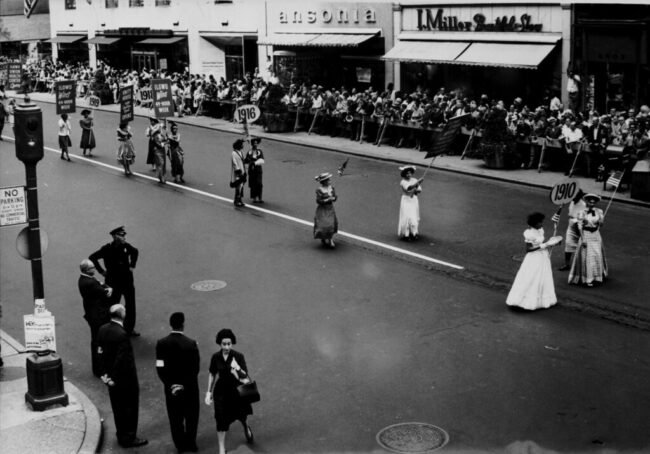
Members of the International Ladies Garment Workers Union march in a Labor Day parade. From the Kheel Center for Labor-Management Documentation and Archives, Cornell University Library. Photo by Kheel Center, courtesy of Flickr
MONDAY, SEPTEMBER 5: Parades, barbecues and travel abound this Labor Day weekend, but alongside the festivities, consider giving this holiday the merit it really deserves: a look at the history and relevance of labor in the lives of American workers. Labor Day is the result of the long struggle for recognition by the American labor movement; the first Labor Day celebration, celebrated in 1882 in New York City, attracted more than 10,000 workers who marched through the streets. Beyond recognizing the social and economic achievements of American workers, Labor Day makes us aware of the countless workers who have, together, contributed to the strength and prosperity of their country.
CHILD LABOR AND DANGEROUS CONDITIONS
At the end of the 19th century, many Americans had to work 12-hour days every day of the week to make a living. Child labor was at its height in mills, factories and mines, and young children earned only a portion of an adult’s wage. Dirty air, unsafe working conditions and low wages made labor in many cities a dangerous occupation. As working conditions worsened, workers came together and began forming labor unions: through unions, workers could have a voice by participating in strikes and rallies. Through unions, Americans fought against child labor and for the eight-hour workday.
LABOR AND FAITH
The value of human labor is echoed throughout the Abrahamic tradition, including stories and wisdom about the nature of labor in both the Bible and the Quran. Biblical passages ask God to “prosper the work of our hands” (Psalm 90), while the Quran refers to the morality of conducting oneself in the public square.
The Catholic church has been preaching on behalf of workers for more than a century. The landmark papal encyclical Rerum Novarum (“Of revolutionary change”) was published in 1891 and has been described as a primer on the rights of laborers who face abusive conditions in the workplace. This became one of the central themes of Pope John Paul II’s long pontificate. In 1981, he published his own lengthy encyclical, Laborem Exercens (“On human work”). Then, a decade later, John Paul returned to this milestone in Catholic teaching in Centisimus Annus (“Hundredth year”).
In 2019, the United Methodist Church published an appeal to church leaders. Titled “Labor Day Is Not Just a Day Off,” the text says in part:
Did you know The United Methodist Church has been a part of the labor movement throughout history and is committed to fairness and justice in the workplace? In the early 20th century the church was working to end child labor. And in the ’50s, during our country’s civil rights movement, we were fighting for fair wages and better working conditions. We were dedicated to fairness and justice in the workplace then, and we still are today.
When John Wesley founded the Methodist movement during the 18th century, there was no “worker movement” the way we’d understand it today. But Wesley preached to and cared for coal miners and other oppressed workers. He also opposed slavery. After Wesley died, his followers continued to work against workplace injustices in rapidly industrializing England, adopting the first Social Creed, in 1908, that dealt exclusively with labor practices.
By 1896, Labor Day was a national holiday in the United States.

Tell Us What You Think